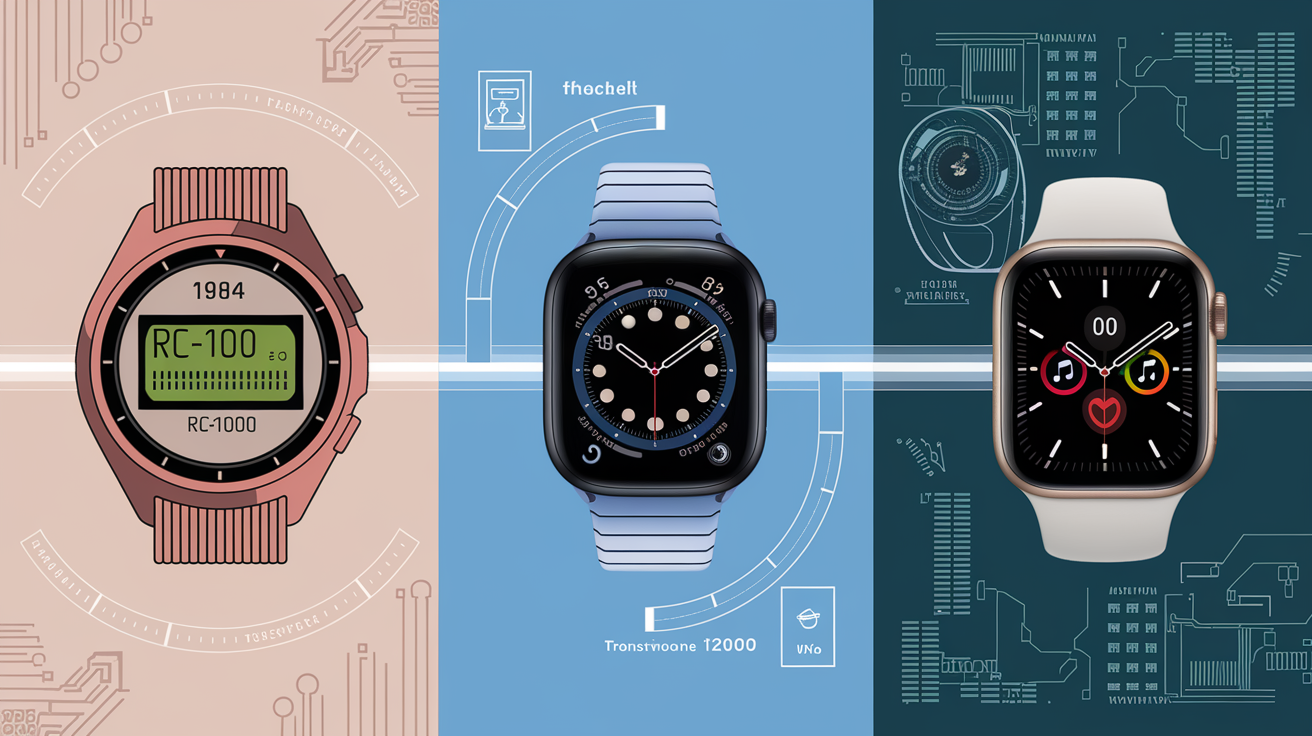The Birth of the Smartwatch: Seiko’s Game-Changing RC-1000
The concept of a smartwatch may seem like a recent innovation, but its roots trace back to the early 1980s. The very first smartwatch, the Seiko RC-1000 Wrist Terminal, was introduced in 1984, marking the beginning of a new era in wearable technology.
Features of the Seiko RC-1000:
- A digital display
- 4KB of user-programmable memory
- The ability to connect to a personal computer
- Data transfer capabilities
While primitive by today’s standards, the RC-1000 laid the groundwork for future smartwatches, demonstrating the potential for wrist-worn computers.
Pioneering Smartwatches and Their Groundbreaking Features
IBM/Citizen WatchPad (2001)
The IBM/Citizen WatchPad, released in 2001, was one of the first smartwatches to run on the Linux operating system.
Key Features:
- A touch-sensitive screen
- 8MB of RAM
- Bluetooth connectivity
Microsoft SPOT Watch (2004)
Microsoft’s SPOT (Smart Personal Objects Technology) Watch introduced in 2004 was ahead of its time.
Notable Features:
- Wireless data reception through FM radio signals
- Customizable watch faces
- Real-time information like news, weather, and stock updates
Sony Ericsson LiveView (2010)
The Sony Ericsson LiveView, launched in 2010, was one of the first to act as a companion device for smartphones.
Standout Features:
- A 1.3-inch OLED display
- Android compatibility
- The ability to display notifications and control music playback
Modern Smartwatches: A Leap Forward
Today’s smartwatches have come a long way from their predecessors. Modern devices like the Apple Watch Series 10, Samsung Galaxy Watch 7, and Fitbit Sense offer features that were once the stuff of science fiction.
Features of Modern Smartwatches:
- High-resolution touchscreens
- Advanced health monitoring (ECG, blood oxygen levels)
- GPS and cellular connectivity
- Voice assistants (Siri, Google Assistant)
- Contactless payments
- Water resistance for swimming
- Multi-day battery life
These modern smartwatches have transformed from simple timekeeping devices to comprehensive health and communication tools that seamlessly integrate with our digital lives.
Comparing Smartwatches: Then and Now
| Feature | Seiko RC-1000 (1984) | Microsoft SPOT Watch (2004) | Modern Smartwatch (2024) |
|---|---|---|---|
| Display | Basic LCD | Monochrome LCD | High-res Color Touchscreen |
| Memory | 4KB | ~512KB | 32GB+ |
| Connectivity | Wired to PC | FM Radio Signals | Bluetooth, Wi-Fi, Cellular |
| Battery Life | Months (basic functions) | 3-5 days | 1-7 days (feature dependent) |
| Health Features | None | None | Heart rate, ECG, Sleep tracking |
| Apps | Built-in only | Limited selection | Thousands available |
Conclusion: The Future of Smartwatches
From the pioneering Seiko RC-1000 to today’s feature-packed devices like the Apple Watch Series 10 and Samsung Galaxy Watch 7, smartwatches have undergone a remarkable evolution. As technology continues to advance, we can only imagine what the future holds for these wrist-worn computers. One thing is certain: smartwatches have secured their place as indispensable tools in our increasingly connected world.
For comparisons of other items and not just smartwatches, check out Item Showdown.



![Apple Watch Series 9 [GPS 41mm] Smartwatch with Silver Aluminum Case with Storm Blue Sport Band S/M. Fitness Tracker, ECG Apps, Always-On Retina Display, Water Resistant](https://m.media-amazon.com/images/I/61fQEcyzLvL._AC_SL1500_.jpg)